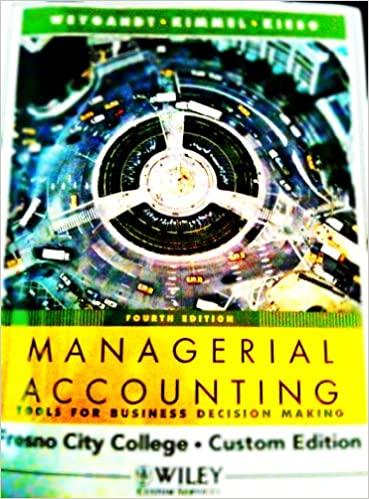Preparation of Individual Budgets During the first calendar quarter of the year, Clinton Corporation is planning to manufacture a new product and introduce it in two regions. Market research indicates that sales will be 10,000 units in the urban region at a unit price of $53 and 9,000 units in the rural region at $48 each. Because the sales manager expects the product to catch on, he has asked for production sufficient to generate a 8,000unit ending inventory. The production manager has furnished the following estimates related to manufacturing costs and operating expenses: Ch 9 Problem and Data Analytics *Varies per unit sold, not per unit produced. a. Assuming that the desired ending inventories of materials A and B are 8,000 and 10,000 pounds, respectively, and that work-in-process inventories are immaterial, prepare budgets for the calendar quarter in which the new product will be introduced for each of the following operating factors: Do not use negative signs with any of your answers below. 1. Total sales $ 2. Production 3. Material purchase cost 4. Direct labor costs $ 5. Manufacturing overhead costs 3. Material purchase cost 4. Direct labor costs $ 5. Manufacturing overhead costs 6. Selling and administrative expenses b. Using data generated in requirement (a), prepare a budgeted income statement for the calendar quarter. Assume an overall effective income tax rate of 30%. Round answers to the nearest whole number. Do not use negative signs with your answers. 6. Selling and administrative expenses b. Using data generated in requirement (a), prepare a budgeted income statement for the calendar quarter. Assume an overall effective income tax rate of 30%. Round answers to the nearest whole number. Do not use negative signs with your answers. Ch 9 Problem and Data Analytics \begin{tabular}{|l|l|l|} \hline \multicolumn{2}{|c|}{ For the Quarter Ended March } \\ \hline Sales & \\ \hline Cost of Goods Sold: & \\ \hline Beginning Inventory - Finished Goods & \\ \hline Material: & & \\ \hline Beginning Inventory - Material & $ & \\ \hline Material Purchases & 0 \\ \hline Material Available & 0 \\ \hline Ending Inventory - Material & 0 \\ \hline Direct Material & 0 \\ \hline Direct Labor & 0 \\ \hline Manufacturing Overhead & 0 \\ \hline Total Manufacturing Cost & \\ \hline Cost of Goods Available for Sale & \\ \hline Ending Inventory - Finished Goods & \\ \hline Cost of Goods Sold & \\ \hline Gross Profit & \\ \hline Operating Expenses: & \\ \hline Selling Expenses & \\ \hline Administrative Expenses & \\ \hline Total Operating Expenses & \\ \hline Income before Income Taxes & \\ \hline Income Tax Expense & \\ \hline Net Income & \\ \hline Cherk & \\ \hline \end{tabular} Ch 9 Problem and Data Analytics Preparation of Individual Budgets During the first calendar quarter of the year, Clinton Corporation is planning to manufacture a new product and introduce it in two regions. Market research indicates that sales will be 10,000 units in the urban region at a unit price of $53 and 9,000 units in the rural region at $48 each. Because the sales manager expects the product to catch on, he has asked for production sufficient to generate a 8,000unit ending inventory. The production manager has furnished the following estimates related to manufacturing costs and operating expenses: Ch 9 Problem and Data Analytics *Varies per unit sold, not per unit produced. a. Assuming that the desired ending inventories of materials A and B are 8,000 and 10,000 pounds, respectively, and that work-in-process inventories are immaterial, prepare budgets for the calendar quarter in which the new product will be introduced for each of the following operating factors: Do not use negative signs with any of your answers below. 1. Total sales $ 2. Production 3. Material purchase cost 4. Direct labor costs $ 5. Manufacturing overhead costs 3. Material purchase cost 4. Direct labor costs $ 5. Manufacturing overhead costs 6. Selling and administrative expenses b. Using data generated in requirement (a), prepare a budgeted income statement for the calendar quarter. Assume an overall effective income tax rate of 30%. Round answers to the nearest whole number. Do not use negative signs with your answers. 6. Selling and administrative expenses b. Using data generated in requirement (a), prepare a budgeted income statement for the calendar quarter. Assume an overall effective income tax rate of 30%. Round answers to the nearest whole number. Do not use negative signs with your answers. Ch 9 Problem and Data Analytics \begin{tabular}{|l|l|l|} \hline \multicolumn{2}{|c|}{ For the Quarter Ended March } \\ \hline Sales & \\ \hline Cost of Goods Sold: & \\ \hline Beginning Inventory - Finished Goods & \\ \hline Material: & & \\ \hline Beginning Inventory - Material & $ & \\ \hline Material Purchases & 0 \\ \hline Material Available & 0 \\ \hline Ending Inventory - Material & 0 \\ \hline Direct Material & 0 \\ \hline Direct Labor & 0 \\ \hline Manufacturing Overhead & 0 \\ \hline Total Manufacturing Cost & \\ \hline Cost of Goods Available for Sale & \\ \hline Ending Inventory - Finished Goods & \\ \hline Cost of Goods Sold & \\ \hline Gross Profit & \\ \hline Operating Expenses: & \\ \hline Selling Expenses & \\ \hline Administrative Expenses & \\ \hline Total Operating Expenses & \\ \hline Income before Income Taxes & \\ \hline Income Tax Expense & \\ \hline Net Income & \\ \hline Cherk & \\ \hline \end{tabular} Ch 9 Problem and Data Analytics














